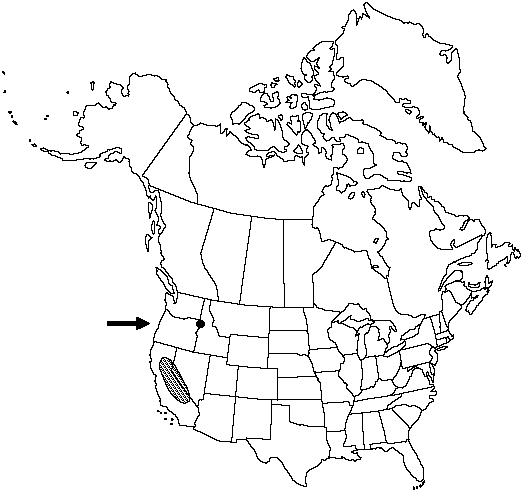Stems compact, ascending, stout, 5–10 mm diam.; scales mostly weakly bicolored, linear-subulate, 0.1–0.3 mm wide, centers dark brown, thin, margins lighter, thin, denticulate to entire. Leaves monomorphic, clustered on stem, 7–30 cm; croziers nearly glabrous. Petiole dark brown, lustrous, rounded adaxially, without prominent articulation lines. Blade linear, 1-pinnate, 1.5–4 cm wide; rachis brown throughout, straight, rounded adaxially, glabrous. Pinnae perpendicular to slightly ascending, usually not decurrent on rachis, simple and unlobed; costae absent. Ultimate segments broadly ovate to elliptic, 7–20 mm, leathery, glabrous; margins plane, not recurved, not covering abaxial surface, borders whitish, entire; apex obtuse to rounded. Veins of ultimate segments obscure. Sporangia sessile or subsessile, containing 64 spores, intermixed with abundant farina-producing glands. 2n = 58.
Phenology: Sporulating summer–fall.
Habitat: Rocky slopes and cliffs, on granitic substrates
Elevation: 1200–3600 m
Distribution

Calif., Idaho, Nev., Oreg.
Discussion
The morphology of Pellaea bridgesii is so distinctive that its sectional (and even generic) placement in Pellaea has long been a source of contention. W. H. Wagner Jr. et al. (1983) documented the existence of sterile diploid hybrids (called P. × glaciogena) between P. bridgesii and P. mucronata (see reticulogram), suggesting that P. bridgesii is most closely related to members of sect. Pellaea. In addition to the more obvious characters mentioned above, P. bridgesii is distinguished from other North American species (except P. ternifolia) by its anastomosing veins.
Selected References
None.